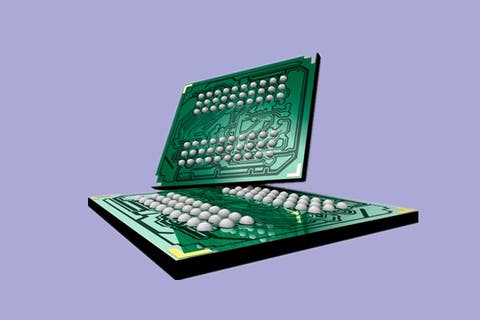Every time when a manufacturer launches a new model, we wait for more. We want it to sport better and more powerful features in order to provide a better performance than its predecessor. But now always the enhanced hardware brings a better experience. Probably, this is also true for the memory. Currently, most of the flagships come with a 6GB or an 8GB RAM. But recently, Xiaomi announced its first 10GB smartphone in face of the Mi MIX 3. We can’t predict whether this capacity is going to become a mainstream next year or not. But one thing is clear as day, the manufacturers won’t stop here. Say, Yesterday, Micron announced that it has begun mass production of its second-generation LPDDR4X memory chip, the performance speed of which can reach 4266Mbps, while the single-chip capacity could be up to 12GB.
Compared to the first generation of LPDDR4X-4266 RAM, the power consumption of the second generation is reduced by 10%. It could be realized due to the use of 10nm (10~18nm) process. At the same time, after the single chip is upgraded to 1.5GB, it can save space for the manufacturer to deploy 6GB/12GB.
According to reports, Micron’s new memory chip currently has the industry’s highest capacity, and currently has the fastest clock 4x DRAM products. But we should also remind you that in July this year, Samsung first released the LPDDR4X-4266 RAM with a 16GB capacity, which is also based on the advanced 10nm process.
The data shows that LPDDR4X memory was first introduced by Samsung and other manufacturers. It mainly reduces the Vddq voltage in LPDDR4 memory from 1.1V to 0.6V, and the Vdd2 voltage remains unchanged at 1.1V. Compared to LPDDR4, LPDDR4X has a lower voltage, which effectively reduces memory energy consumption.
Currently, only the Kirin 980 can support the industry’s highest LPDDR4X-2133 memory. However, with the increase in data throughput requirements in the 5G era, the high-frequency and high-capacity LPDDR4X will become the mainstream. Micron’s new memory chips will provide better data processing performance for computing and data-intensive mobile applications such as AI, AR, 4K video. They will be used in mobile devices such as smartphones, tablets, etc.
Follow Gizchina.com on Google News for news and updates in the technology sector.

what a waste. the 12 GB RAM will only sit there sipping battery power while not contributing any performance improvement. not to mention increasing Android handset prices to iPhone XS Max levels…